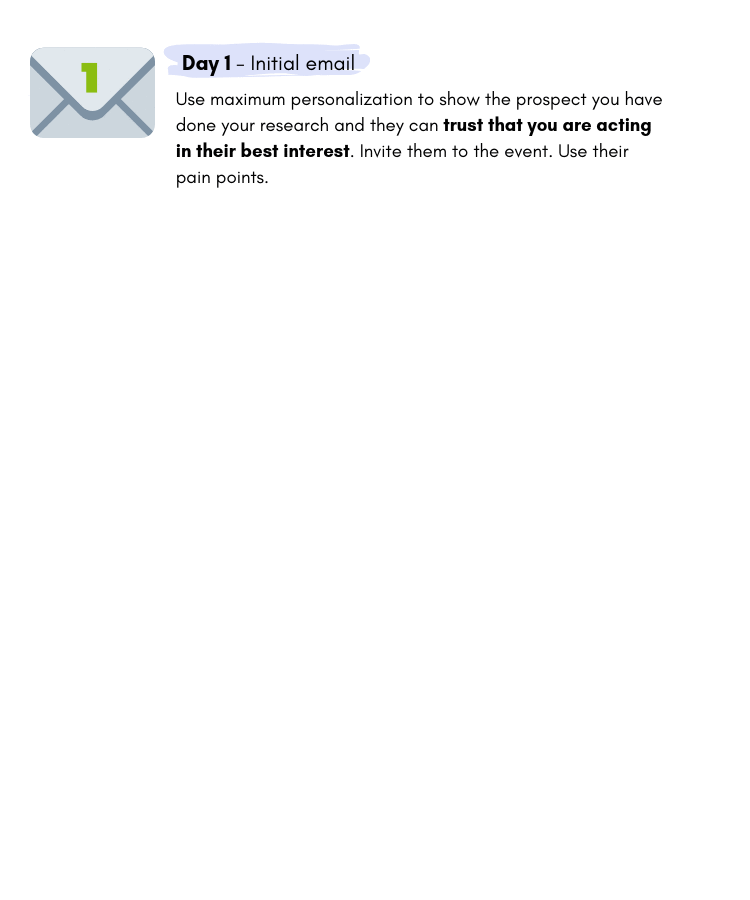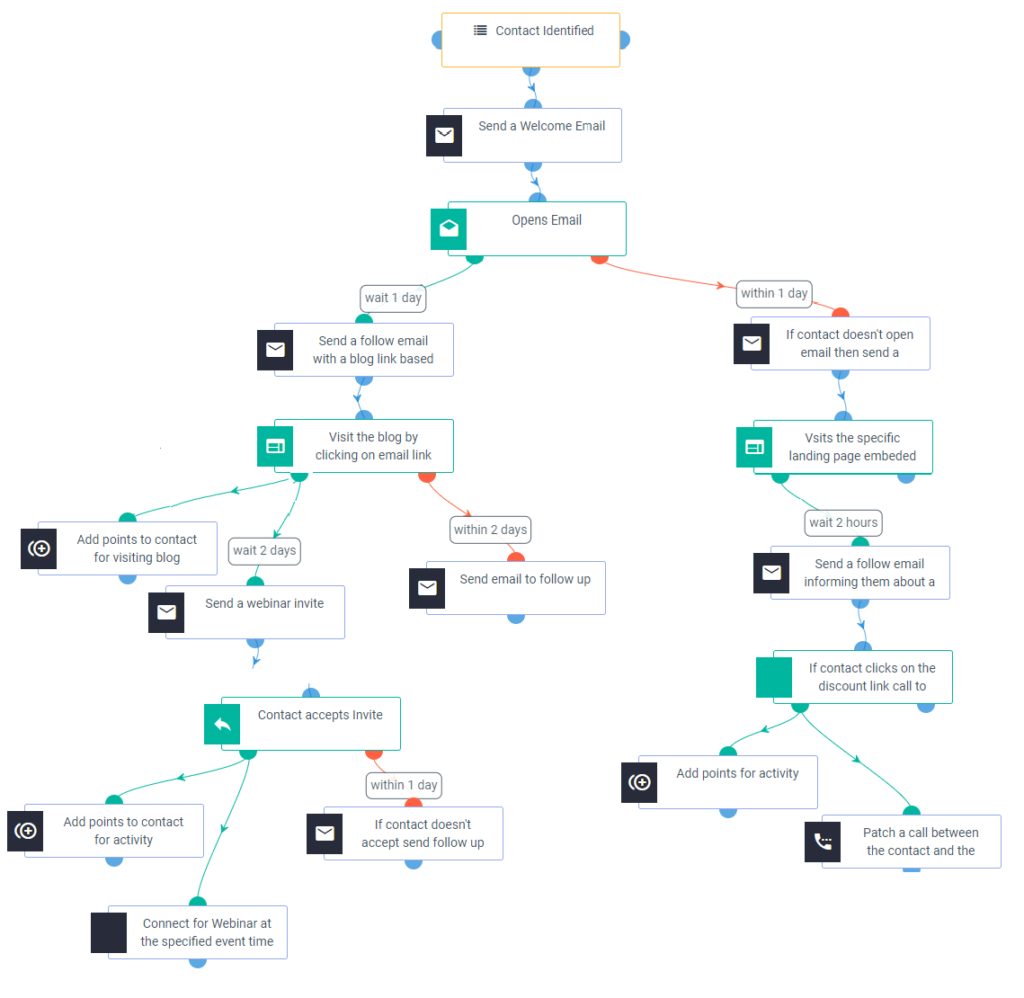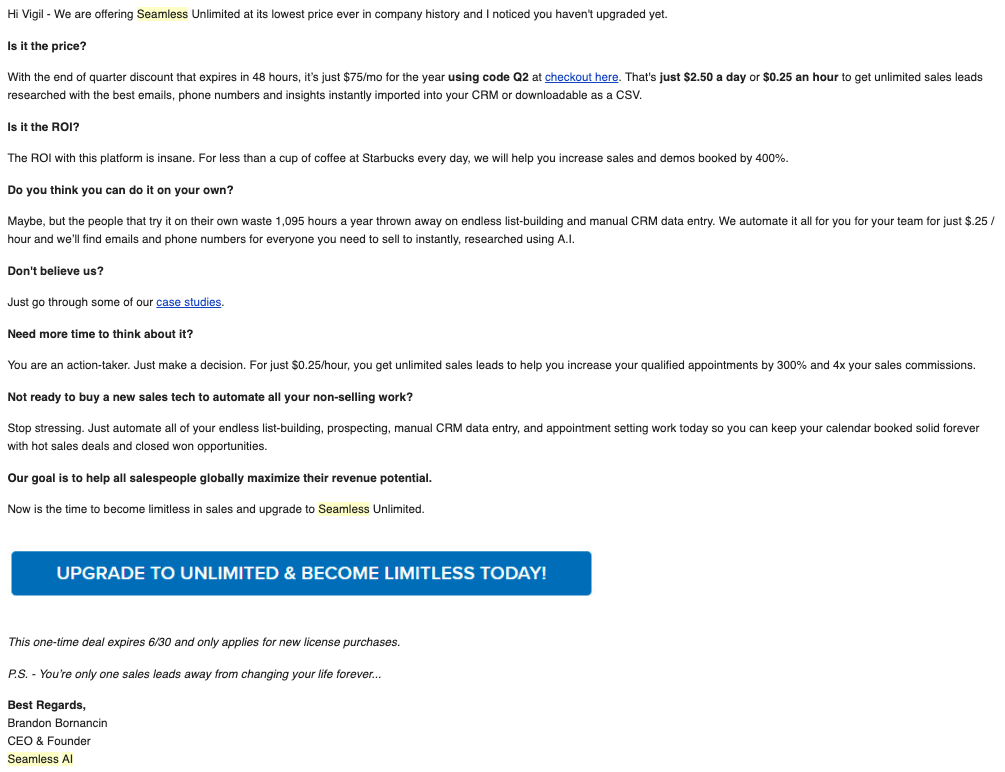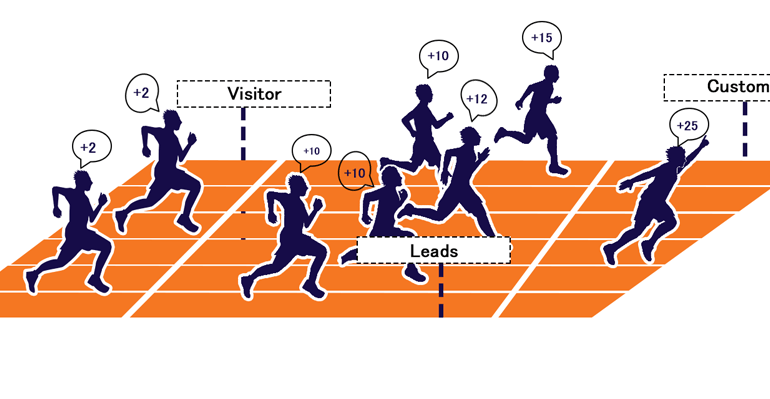Marketing automation has been the buzzword for marketing and sales personnel in the last few years. The rise of marketing automation has roots attributed to the advent of new technologies and sophisticated tools and an increased need for personalization in marketing.
As per predictions, The sheer size of this market will reach $32.6 Billion by 2024, with a compound annual growth rate of 13.6%.
Marketing automation is nothing but automating repetitive marketing tasks such as emails, social media, website messaging, text messages et cetera.
Jump Directly to
1 . Customer lifecycle and its importance
2. Leveraging marketing automation in different stages of the customer lifecycle
Nowadays, every other team is leveraging some or another form of marketing automation to grow their business. So, how do you stand out?
At times, we tend to overlook marketing automation at various stages of the customer lifecycle. Most businesses use marketing automation for nurturing the leads, and some use it post-sale and others at different stages of a customer lifecycle.
The full extent of marketing automation gets achieved and realized if you widen the horizon and include automation at most customer touchpoints.
Still Not an User of Aritic PinPoint Automation?
Let’s discuss this in detail.
Customer lifecycle and its importance
Each of the customer lifecycle stages gets governed by different triggers and motives. They have different goals and expectations. Hence, marketing activities and customer conversations vary significantly from stage to stage, and so marketing automation.
For example, while delivering ads at the lead stage might be a good strategy, but it might not work for retention. Hence this is the primary reason why understanding customer lifecycle becomes immensely important for marketers.
Understanding customer lifecycle and using the right strategies will help you increase overall efficiency and ROI on marketing efforts. In the end, when everyone in the market has got similar tools and budgets, it boils down to strategy and implementation.
Leveraging marketing automation in different stages of the customer lifecycle
1 . Reach Stage
Reach stage or awareness stage is the beginning of any customer lifecycle where you target prospective leads to get their attention. It could be through targeted ads, cold emailing, distributing content at the right places, social media, or any other marketing channel which works for you.
While you are trying to woo an audience for your product, you need lots of experimentation, iterations, and tests. You can not expect to sit on a strategy and stick with it all the way long.
For example, distributing content is a manual and tedious task. With any targeted content distribution tool such as Taboola and Outbrain, you can automate these tasks. It would be best to define your targeted audience, and these tools will take care of the rest.
The major role of marketing automation at the reach stage gets realized with cold email drip campaigns. You may have heard that cold emailing is dead.
Well, sure they are, but only mass-targeted, poorly written, and no background research emails get flushed in the inbox. Contextual, personalized, account-based cold emails remain the top acquisition channel for a lot of marketers.

A generic cold drip campaign example. Credits: Snov.io
With modern automation tools, you can find and validate leads, create drip marketing campaigns and convert these prospects into leads. With times a-changing, you need to tweak your cold marketing strategies as well.
2. Nurturing Stage
Nurturing is the most critical stage in a customer lifecycle and sometimes vaguely stressed by marketers. But, actually, the real power of marketing automation gets realized in the nurturing stage.
According to Strategic IC, companies that automate lead management see a 10% or more bump in revenue in 6-9 months.
Given the nurturing stage where most of your leads leak from the funnel, it becomes essential to showcase your product’s value.
More often than not, leads in nurturing stages are aware of the problems they are facing. Your job is to make them solution aware and ultimately product aware by educating them. It’s done through emails, in-app messaging, or demo calls.
Marketing automation makes your life easier by delivering information and content to the leads at the right time and with a touch of personalization.
Marketing automation at the lead stage differs on a case-to-case basis. There are certain factors to consider, such as how a lead has entered your marketing automation workflow (downloaded a whitepaper OR signed for a product demo). Or what is your target audience? Or how complicated or easy is it to use your product?
A lot of businesses start with date-based marketing automation workflow for lead nurturing. Suppose a lead sign up to try your product which has a thirty days trial period. A date-based automation workflow could look like this:
Execute Effective Marketing Automation Workflows Now
Day 0 – Send a welcome email
Day 3 – Send getting started guide
Day 8 – Send an email for scheduling a demo call
Day 14 – Send the benefits of your USP
Day 21 – Send customer case studies
Day 30 – Send a reminder to upgrade the subscription
While it has shown results in the past, the problem with such workflows is that they lack context and personalization. Hence, these date-based workflows have become outdated in recent times.
Most of the modern workflows are activity/event-driven. The benefit of such workflows is that they are highly contextual, personalized, and easy to club with the lead scoring framework.
Lead scoring is a methodology to determine how to rank your users, leads, or potential leads based on their activity on your website, product, or emails. It also determines how engaged they or how likely they are to convert. It is a potent weapon in B2B marketer’s arsenal. Lead scoring clears the clutter from potential customers, sets a priority order, and reduces manual prospecting significantly.
Setting up behavior-based automation with insights from lead scores can turn the table upside down for you. Here’s an example of behavioral marketing automation based on activities on websites and emails. Every successful email step (read, replies, or clicked a link) adds to the lead score, and you can rank your leads based on engagement.
Behavioral automation workflows may be a little overwhelming to implement. It would help if you also ran many experiments and A/B tests on nurturing emails in such workflows to get the maximum ROI on efforts. But, if implemented correctly, marketing automation can deliver unparalleled results for you.

Example of behavioral automation workflow. Credits: Aritic
3. Acquisition Stage
Acquisition stage of a customer lifecycle is where a qualified lead gets converted into a paying customer. You need to make your best impression, give the best onboarding experiences and provide immediate customer service resources in a relatively short time immediately preceding and succeeding the sale.
You should be on your toes at the time just before the customer is likely to convert (lead score is a good tarot card reader). You can send out value-driven, urgency instigating, and FOMO messages to the leads with high lead scores. You can also share successful customer case-studies about how your customers have benefited from your product. Better yet, you can also include in-app messages to get the maximum out of your marketing automation.
A recent email from one of the products I was trying (Seamless AI) out caught my attention.

This email had quite a few points to ponder and elements to drive me for a purchase, such as:
- Powerful subject line
- Conveying value for money
- Validation of ROI
- A customer case study
- Covering my pain points
- Strong CTA…
On the other hand, immediately succeeding the sale is a different ball game altogether. In contrast to the urgency instigating and FOMO messaging, you need the onboarding messaging to stir a sense of trust in your customer’s mind. You can also couple such messages with a link to your training videos or customer service channels.
4. Retention Stage
Customer retention is another critical stage of any customer lifecycle and is often an overlooked aspect of a business. We tend to think that the hustle ends when we have secured a customer.
The very reason why we spend 11 times more on recruiting new customers than retaining existing ones, according to Brand Keys. On the contrary, according to a Bain and Company report, a mere 5% increase in customer retention correlates with at least a 25% increase in profit.
While customer support remains the top reason for a customer to stay with or leave your products/services, regular customer conversations are also necessary to ensure that you do not lose touch with your customers. Many businesses do not communicate enough with their customers post-sale.
One of the top reasons for churn and thus low growth of the company. Hence, the use of marketing automation at the retention stage is a rarity.
There is an abundance of marketing automation use-cases at the retention stage, such as:
- Delivering your educational content
- Updating about their progress with the product
- Drive more actions
- Data-driven reports of their performance for a period
- Upselling
- Gamification
- Reactivation
- New feature launches and many more…
Look at the email from Animoto to reactivate a user gone cold.

Credits: Really Good Emails
The best form of retention emails I have seen is a mixture of data-driven gamified emails. Grammarly, an online writing performance analyzer, nails their retention emails. Here’s an example of how Grammarly gamifies product usage and delivers a provoking and action-worthy email.
After-sales, communicating with your customers ensures they keep using your product or keep buying from you, thus increasing their chances to stick with you. Also, using marketing automation helps reactivate customers so that they do not delinquently churn out.
5. Referral Stage
Referral marketing has changed the fortunes of many businesses. Think Dropbox, Uber, Amazon Prime, Airbnb, and many others. Referral marketing hyped so much that SaaS products offering referral infrastructure have come up to help you accelerate that.
Now we are submerged in the sea of all sorts of referrals. In this case, smart placement and messaging take the cake. You are more likely to help (read: refer) someone if you have a healthy relationship (read: satisfied) with them.
You can automate your ‘asking for referral’ messages set for sending at times when your customers are happy and satisfied such as when a customer has:
- left good reviews for you online
- rated your customer service 5 stars after you have solved their issue
- rated you high on an NPS survey
- loved your product and want to refer to others himself/herself
One strategy I have seen working in referral is a survey followed by a referral mail for promotors who have rater you really high (let’s say 9/10 or 10/10). You can easily set up these messages using marketing automation software.
An incentivized referral could be a cherry on the cake if you can afford to. Let’s be honest, who doesn’t like presents, discounts or free products.
Wrapping Up
Marketing automation has turned out to be a lifeguard for marketing and sales professionals across the globe. It can do wonders for you if implemented correctly and throughout the customer lifecycle.
Before concluding, let me say that contrary to popular belief, marketing automation does not necessarily generate leads for you, or make your ads better, or do your marketing for you on autopilot. Actually, it helps you in expediting and automating manual processes. It makes marketing automation one of the most promising fields.
With AI and predictive analytics on the rise, marketing automation will become smarter, sophisticated, and contextual. Good day ahead, my fellow marketers.
⭐ What is customer lifecycle management?
Customer lifecycle management is the methodology of assigning multiple stages of the customer lifecycle for maintaining customer loyalty towards the products or services.
⭐Why do I need to create a new Customer Acquisition Funnel?
Customer acquisition is the method of bringing new customers to your business. Creating a new customer acquisition funnel helps convert more qualified leads into loyal customers by analyzing the customer journey.
⭐How long Customer Lifecycle will take?
The customer’s life cycle will continue until unique buyers become repeat customers.
⭐How to improve customer lifecycle?
Methods to Enhance the Customer Life Cycle:
a) Strategy for enhancing the onboarding process.
b) Provide attractive value-added content.
c) Deliver good customer service.
d) Focus on omni-channel marketing.
e) Monitor social media platforms.
⭐What is the purpose of customer acquisition?
There are a lot of reasons why a company would be interested in acquiring new customers. One of the most common is that they want to expand their enterprise. The acquisition of new customers is really important when you’re trying to build your brand and get a large number of people familiar with what you’re doing.
⭐Why is customer life cycle important?
The customer life cycle is an important component of business growth and development. Companies need to recognize that their customer behavior constantly changes throughout the customer lifecycle, and thus tailor their interactions accordingly to be able to meet the needs of every stage in their customers’ journey.
⭐What is a marketing lifecycle?
A marketing lifecycle is a series of steps that define the actions taken to promote a product or service. The marketing lifecycle begins with market research and ends with customer retention, including all the activities necessary to get your product or service into customers’ hands.
⭐What is lifecycle strategy?
The lifecycle strategy is the term for a business’s set of strategies for its products. It can be used to describe how a company plans to get its product on the market, how it sees that product succeeding in the marketplace, and what changes (if any) will need to be made as the market dictates.



3 Comments
Marketing automation is one of the most important part of the business. Marketing is heavily integrated in order to make sales. When every company grows it, gets harder to have a one-on-one relationship with all your customers which now leads to wanting to the marketing automation. Well, I must say that It was really a good read on this topic! marketing automation is a mandatory fact. It’s good to see someone put forth recommendations on marketing automation. As you point out, there are plenty of tricks & strategies. Great selection! it was very useful. Thanks for putting top-notch content in the article. It will encourage entrepreneurs to work more effectively and gain potential results from it. I would like to be here again to find another masterpiece article.
These are some incredible tips, glad to read revelations about creating different marketing automation strategies at specific points in the customer life cycle.
Happy to read revelations about the creation of different marketing automation strategies at specific points of a customer life cycle. Looking for more like this to come from you!